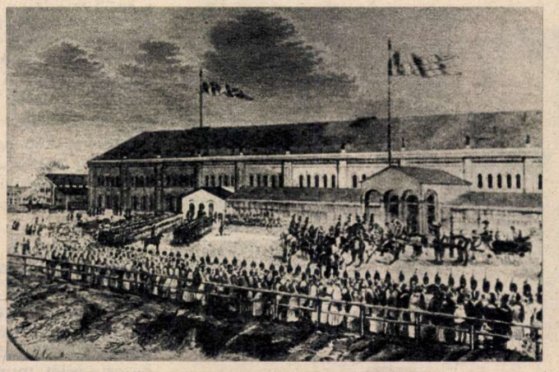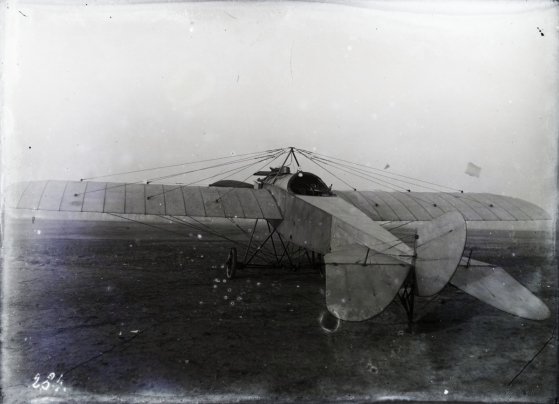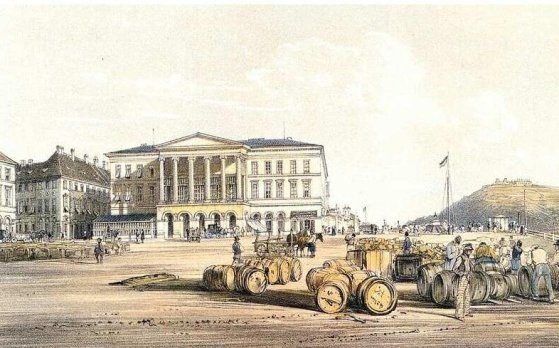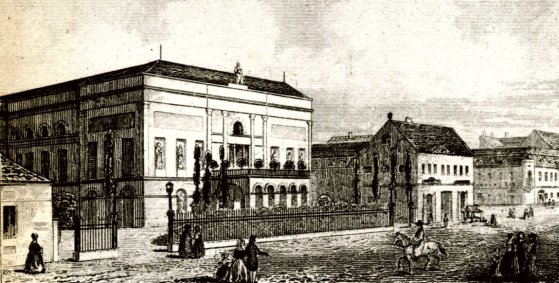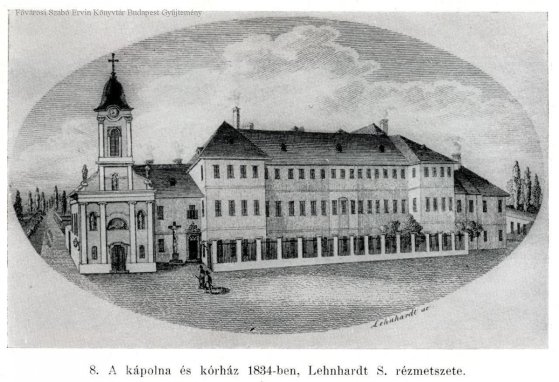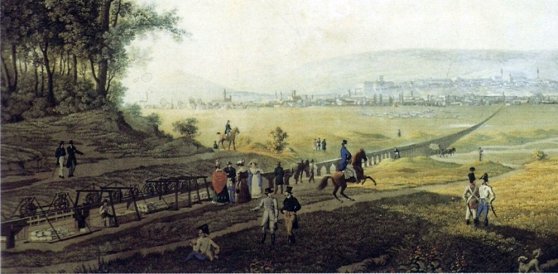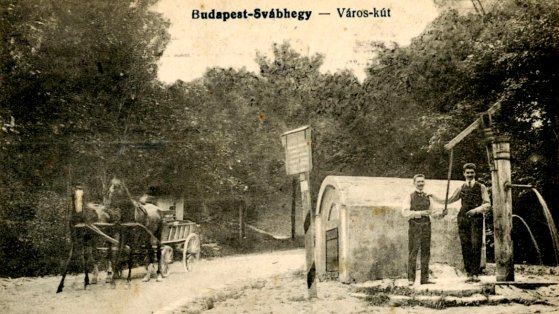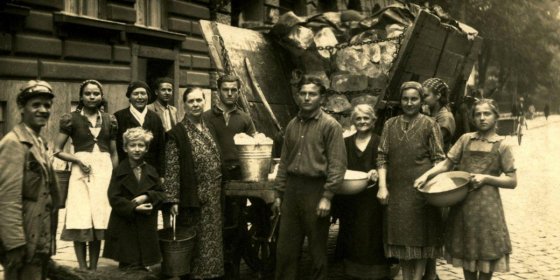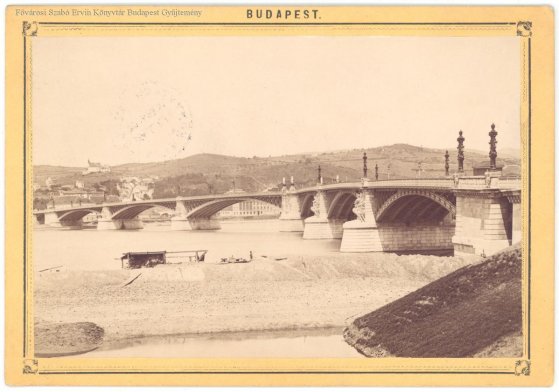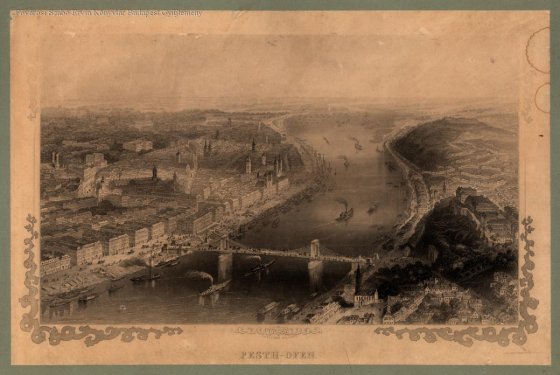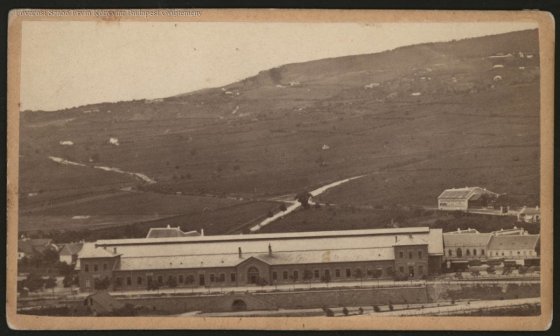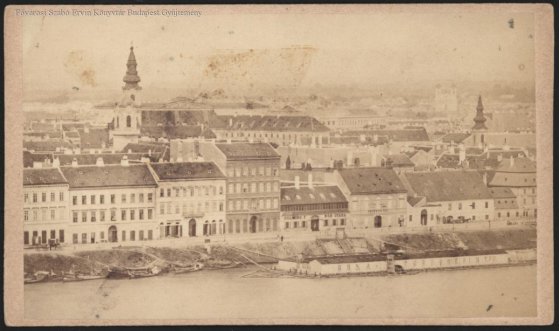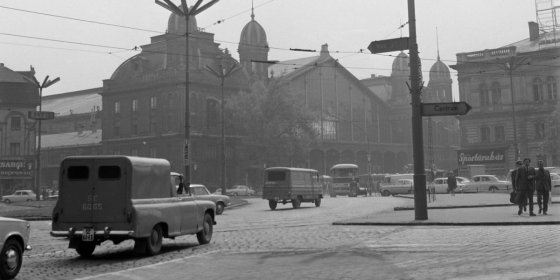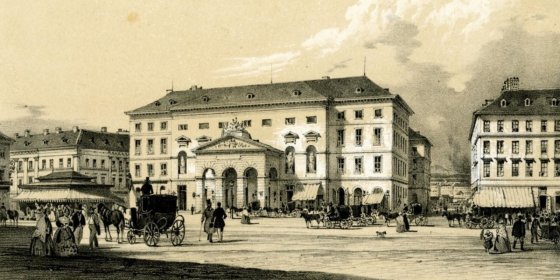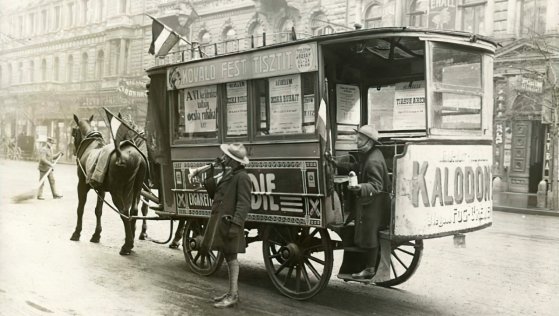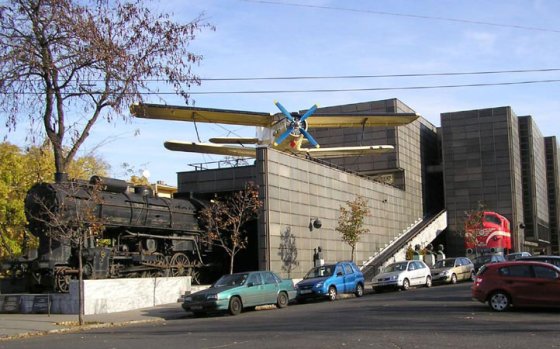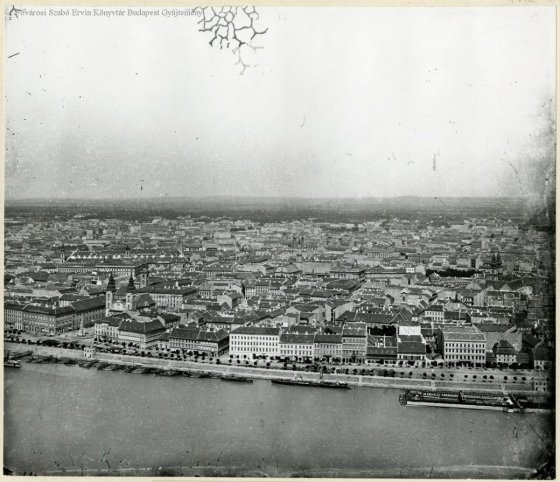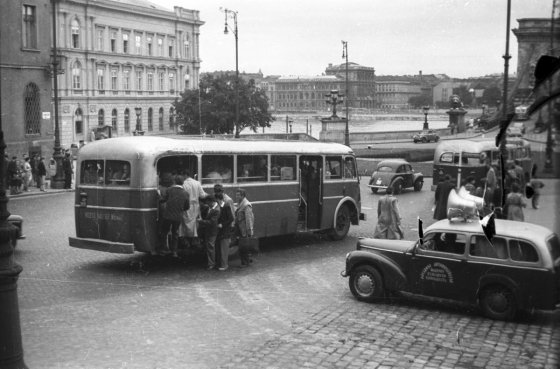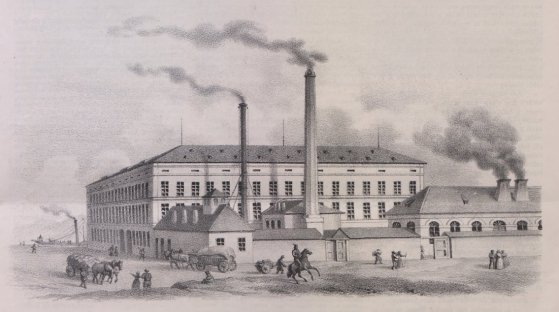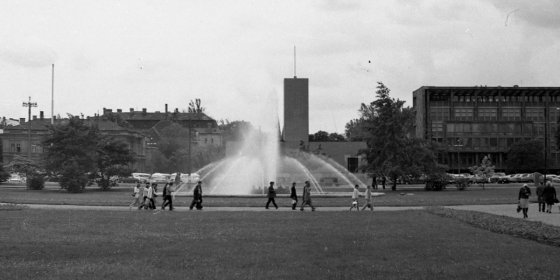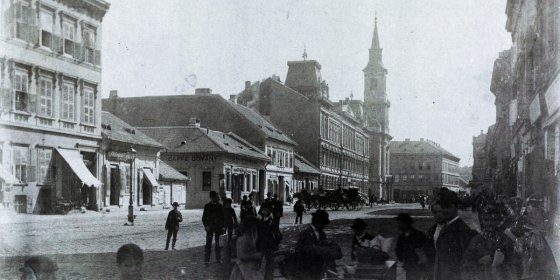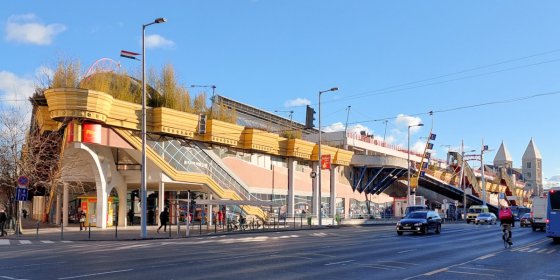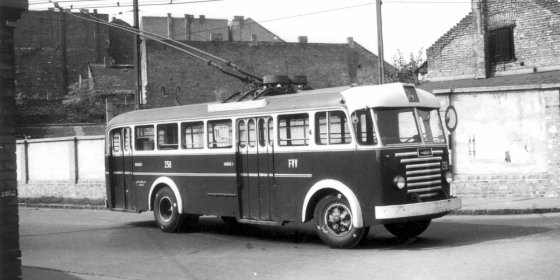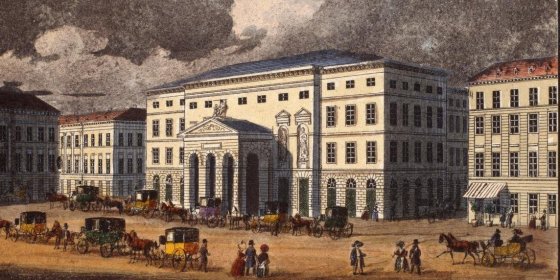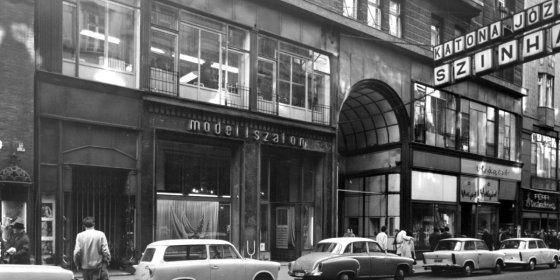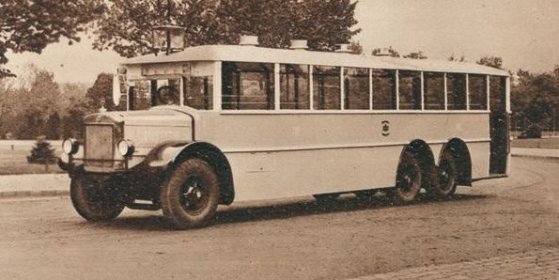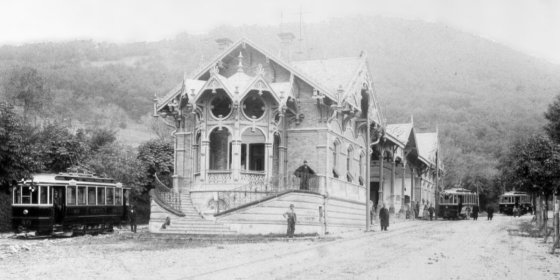 The „intertwined history” of the bridges and the city of Budapest
Which ideas and events have shaped the fate of bridges of Budapest and the cityscape? Alongside many other interesting facts, this question is also answered this newly published book by the Budapest City Archives, which introduces the history of bridges in Budapest.
The „intertwined history” of the bridges and the city of Budapest
Which ideas and events have shaped the fate of bridges of Budapest and the cityscape? Alongside many other interesting facts, this question is also answered this newly published book by the Budapest City Archives, which introduces the history of bridges in Budapest.
Pest
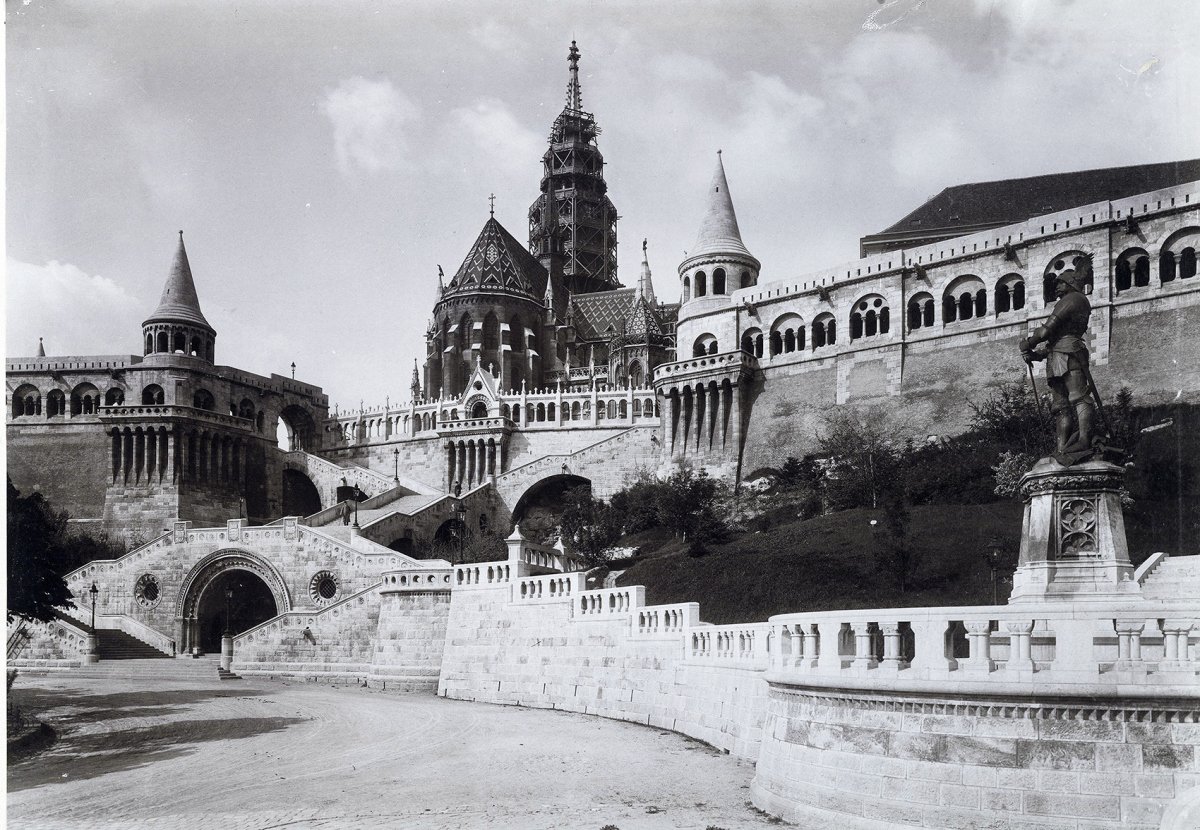 Skulls under the Fisherman's Bastion - The Forgotten St. Michael's Chapel
Skulls under the Fisherman's Bastion - The Forgotten St. Michael's Chapel
September 13, 2022 at 2:30 PM
In the last years of the 19th century, during the works before the foundation of the Fisherman's Bastion, a cavity hiding skulls emerged from the ground, which the architect Frigyes Schulek referred to as one of the Castle's old dungeons. But he could have guessed its original function because he deemed it worthy of preservation, but the place was then forgotten again, only to be found again in the middle of the 20th century: now the place has been identified as the medieval St. Michael's Chapel, which since 1997 has been one of the most interesting details of the Fisherman's Bastion.
The railway line from Pest to Szolnok was opened 175 years ago
September 2, 2022 at 9:00 AM
In addition to travel from Pest to Vác by rail, it was made possible to reach Szolnok, as the new line was opened 175 years ago. This date is less well-known than 1846, which is known incorrectly as the opening of the first Hungarian railway but "only" the first steam-hauled railway line was opened then. The opening of the Szolnok line on 1 September 1847 was at least as important because of this, Pest's central role in trade strengthened.
Air Parade in 1912 - When people had to pay to see the air show
August 27, 2022 at 11:32 AM
The air parade on 20 August of this year was cancelled, although the air shows on St. Stephen's Day now have a history of 110 years in Budapest. The first air show on 20 August was held in 1912, with the same purpose as today: to demonstrate the skills of the pilot and to show the capabilities of the aircraft. People had to pay for the big and spectacular event at the time, but it turned out afterwards that the spectators would have expected more for their money.
The establishment of the Pest Casino
August 25, 2022 at 11:28 AM
One of István Széchenyi's first creations was the Pest Casino, which was a kind of leisure club with cultural and economic development goals. The Pest Casino was opened 195 years ago, on 20 August 1827.
The first building of the National Theatre was handed over 185 years ago - the County of Pest embraced the cause of Hungarian-language plays
August 22, 2022 at 11:10 AM
It opened as the Hungarian Theatre of Pest 185 years ago, on 22 August 1837, but three years later it was already operating as the National Theatre. The first permanent Hungarian-language theatre was made possible by the support of the County of Pest and the generous donation of Prince Antal Grassalkovich. The building was located at today's 3 Rákóczi Road, it was first built around and expanded, then closed and demolished in 1908.
When Rókus Hospital was almost demolished
August 14, 2022 at 7:00 PM
150 years ago, the Pest council discussed the idea of demolishing the Rókus Hospital. The plan was not born from the regression of healthcare, but rather from its development. The city fathers wanted a new, more modern hospital elsewhere.
The first Hungarian railway was built 195 years ago - the special structure delivered construction materials from Kőbánya
August 12, 2022 at 6:55 PM
The first Hungarian railway line led from today's Pest to Kőbánya. The 7.6-kilometeresection, built in 1827 and realized with a special technical solution, was not profitable, and was discontinued after 7 months.
A forgotten occupation: water sellers on the streets of Pest and Buda
August 11, 2022 at 6:47 PM
Water is a basic necessity for life, so its significance has been extremely important in all ages. Today it is natural that water flows from the tap, but in the past this was not the case, water was also brought to the houses by vendors so that people could wash, cook, clean themselves, and most importantly, drink. In the 19th century, Pest and Buda began to develop significantly, the local wells and sources could no longer fully satisfy the needs, so water sellers appeared who measured their portage for money.
The plot of the demolished Burg Hotel was transferred to the property manager of the MNB
August 5, 2022 at 5:30 PM
The former Diplomatic House on Szentáromság square was demolished at the beginning of 2022, and a new conference center will be built in its place, the visual plans of which have already been presented. The plot was recently transferred to the property manager of the MNB.
When icemen still walked the streets of Pest and Buda
August 5, 2022 at 2:26 PM
The heat is raging on the streets of Budapest, and we are greeted by increasingly hot days. During this unusually warm period, we always think of the possibilities of refreshment, and of cooling with the beneficial effect of ice. In the last century, one of the characteristic figures of the streets of Budapest was the iceman, who transported huge blocks of ice to cool food, fill ice stacks, and cut them to the required size. Long after the appearance of the first refrigerators, even in the 1950s and 1960s, ice trucks were on the streets of Pest and Buda, as evidenced by contemporary photographs.
The construction of the Margaret Bridge began before the city unification - piling began 150 years ago
August 1, 2022 at 9:00 AM
The Margaret Bridge was the second bridge between Pest and Buda, the construction of which began 150 years ago, on 1 August 1872, even before the unification of the city. Many people criticized the designated location, but the government decided that the new Danube crossing should connect to the planned Outer Ring Road and through it to the Sugárút [Avenue]. The bridge was designed by a French engineer and built by the French company he founded, and was completed in four years.
When the Turkish Sultan visited Pest and Buda
July 31, 2022 at 10:30 AM
The Turkish Sultan arrived in Pest-Buda in the summer of 1867. On the occasion of the one-day visit, the people of Pest organised a folk ceremony, welcoming the guest with 72 cannon shots. Pasha Abdul-Aziz stayed here for only a few hours, visited the the royal palace in the Castle, and his program even included a carriage ride in Pest, and then left in the same way as he arrived, by boat.
By train to Pest and Buda - Until the Compromise, only private railways operated in the country
July 28, 2022 at 9:00 AM
Today, it is natural to get on the train or plane and get anywhere in the world from Budapest. However, it was quite different a century and a half ago. Let's see where someone could travel from Pest or Buda by train 155 years ago, in the year of the Compromise!
The last year of Pest's independence - Only 34 four-story houses stood in the city before unification
July 22, 2022 at 11:00 AM
Three small towns stood on the banks of the Danube 150 years ago. The largest of the settlements was Pest on the left bank, which already had almost 5,700 buildings. Budapest existed only in plans and legislation, but Pest was constantly being built and developed. In 1872, the last independent year before the unification of the city, 206 new residential buildings were handed over, but the fact that 28 stables were also built in the same year clearly shows the way of life and transport options of the time.
Bridge over Marx Square - Fifty years ago, the environment of the Nyugati Railway Station was imagined this way
July 8, 2022 at 11:00 AM
The design competition for the arrangement of the area around the Nyugati railway station was closed a few months ago. In the new ideas, a more livable, greener railway station environment and Nyugati Square were outlined, and the road overpass crossing the square was no longer considered. Fifty years ago, however, the future of the railway station was imagined quite differently. The results of the design competition at the time were announced in the press on 8 July 1972.
Hebe's Kiosk: the first outdoor ice cream parlour in Pest
July 7, 2022 at 1:00 PM
Budapest has a long tradition of making ice cream. Already during the Turkish rule, eastern vendors made iced drinks from fruit juices, and then northern Italian immigrants started making ice cream-like sweets in Buda and Pest in the 18th century. However, the real triumph of today's ice cream can be linked to the name of confectioner Péter Fischer in Budapest, who opened his famous kiosk on today's Vörösmarty Square 180 years ago.
The first horse-drawn omnibus started in Pest 190 years ago - These carriages travelled the streets of the capital for nearly a hundred years
July 1, 2022 at 9:00 AM
The first omnibus, i.e., horsebus, started in Pest on 1 July 1832. It connected two coffee houses, one was in the City Park, the other in the City Centre, the main goal of the business was to increase the turnover of the City Park coffee house. Omnibuses were part of the Budapest street scene for nearly a hundred years.
Thirty-five years ago, the newly built wing of the Museum of Transport was handed over
June 6, 2022 at 11:00 AM
A major event in the life of the Museum of Transport took place 35 years ago, after 8 years of construction, the new wing of the building was handed over. Although the museum's severe lack of space was alleviated, the new wing, which was modern in the era, did not solve all the problems.
A plan made 150 years ago for the development of Pest - A special drawing of the Eskü Square Bridge
June 5, 2022 at 9:30 AM
150 years ago, there was no unified Budapest, but there was already a unified plan for the development of the future capital.
Sixty years ago, Budapest was at a crossroads - the transport of the capital in the 1960s
April 23, 2022 at 2:00 PM
Budapest's traffic was at a crossroads 60 years ago as well as now. Experts sought answers to questions about how much the then outdated public transport network needs to be developed and how to prepare the city for the expected car traffic. Studies have also helped to make these decisions. Based on a work published 60 years ago, we present the transport dilemmas of Budapest at that time.
One of the first Hungarian machine factories operated in Lipótváros
April 21, 2022 at 9:30 AM
One of the first machine factories in Pest practically operated as a subsidiary of the József Rolling Mill, and for economic reasons it became an independent factory, which then became one of the first machine factories in Hungarian industry 175 years ago. Unfortunately, it was not long-lived, but its impact was significant.
Fifty years ago: severe water shortages in Budapest
March 30, 2022 at 9:00 AM
As in the current drought, Hungary and Budapest was hit by a significant water shortage fifty years ago, exacerbated by an outdated water supply network and regular pipe ruptures. The situation was so critical in 1971–1972 that the water consumption of industrial plants was restricted and the population felt water shortages, as in many places there was no water flowing from the taps, so for a while the water supply had to be secured by water carts.
It was decided 245 years ago that the oldest university in Hungary was moving to Buda
March 16, 2022 at 9:00 AM
The oldest, still operating university in Hungary, the legal predecessor of today's Eötvös Loránd University, Semmelweis University and Pázmány Péter Catholic University, began operating in Nagyszombat [today Trnava] in 1635. Maria Theresa decided to move it, and although it was suggested that it should be placed in the Invalidus Palace in Pest, in the building of today's Central Town Hall, it was finally moved to Buda, into the Castle, in 1777.
Crowded homes, high mortality: the people of Pest did not have an easy life 150 years ago
February 16, 2022 at 10:00 AM
Today, we cannot imagine the misery of the people of Pest in certain parts of the city before the unification of the city. Nor was it rare, according to statistics from 150 years ago, for several families to live in a single room. Those living in a room crowded with 6 to 10 people died sooner, and the average life expectancy, even in the best parts of downtown, was less than 26 years. PestBuda's article reveals that the misery was great, especially in Ferencváros and Józsefváros, but the situation did not improve in the other districts of the capital for a long time.
The Lehel Market Hall building was handed over 20 years ago
February 8, 2022 at 9:30 AM
The Lehel Market Hall building was handed over twenty years ago on the site of the more than 100-year-old Lehel Square Market. The view of the huge five-story hall, which includes more than three hundred business premises, is still very divisive. Thousands of people shop every day in the hall built in the postmodern style. How could it be that even though they wanted to design a hall here as early as the 1900s, they had to wait until the 2000s? That is what PestBuda investigated.
The Ikarus 60 trolleybus was introduced seventy years ago
February 7, 2022 at 11:00 AM
In the 1950s, the Hungarian-made solo, ie non-articulated, trolleybuses, which ran until the mid-1970s, began to be produced out of need. Although Soviet technology was used, the body was the same as the Ikarus 60 bus that appeared at the time. The first Ikarus 60T, ie the trolleybus, was introduced to the general public in Budapest 70 years ago.
The German Theatre in Pest, once the largest theatre in the city, burned down 175 years ago
February 4, 2022 at 9:00 AM
The side of today's Vörösmarty Square facing the Danube has been lined with many buildings over the past 200 years, the first being the German Theatre in Pest [Pesti Német Színház], which was handed over in 1812. Although excellent Hungarian artists of the time also performed in the huge building, which could accommodate 3,500 spectators, such as Déryné and its second conductor was Ferenc Erkel himself, however, the theater could only be used for 35 years, as it burned down on 2 February 1847.
They were looking for the old Pest city walls after a pipe burst in Pest
January 28, 2022 at 9:00 AM
Pipe bursts occur. Sometimes they are just unpleasant, sometimes they cause serious damage, and rarely do they lead to interesting discoveries. This happened in the city centre, where in 1972, following a pipe burst, it was believed that a section of the old Pest city wall had come to light.
Buses appeared on the Outer Ring Road ninety years ago - the public could travel for free on the first one
January 25, 2022 at 9:00 AM
The tram has belonged to the scenery of the outer ring road for almost a quarter of a century now. Traffic on the ring road is unthinkable without it, but there was a time when trams were not enough, so from 1932, for 57 years, buses also ran on the Outer Ring Road. They started on 25 January, 1932, just 90 years ago.
The legendary Zugliget tram line was shut down 45 years ago
January 17, 2022 at 2:00 PM
One of the most popular tram lines, the last of which was the iconic tram 58, was discontinued 45 years ago, on 17 January 1977. One of the first tram lines on the Buda side was the one in Zugliget, which started in 1896, the year of the millennium, and although it was replaced by the 58V replacement bus after the 1977 shutdown, then the 158 bus, and today the 291 bus, to this day, many are waiting for the revival of the tram line in the capital.
More articles
 The „intertwined history” of the bridges and the city of Budapest
Which ideas and events have shaped the fate of bridges of Budapest and the cityscape? Alongside many other interesting facts, this question is also answered this newly published book by the Budapest City Archives, which introduces the history of bridges in Budapest.
The „intertwined history” of the bridges and the city of Budapest
Which ideas and events have shaped the fate of bridges of Budapest and the cityscape? Alongside many other interesting facts, this question is also answered this newly published book by the Budapest City Archives, which introduces the history of bridges in Budapest.
 The Bridge Report, which brought a turning point in the history of Budapest
A travel report that changed the history of Pest and Buda, as well as Hungary. The little book contributed to the change of half a thousand years of legal customs and the implementation of an investment of unprecedented size and technical quality. This book was The Bridge Report [Hídjelentés in Hungarian].
The Bridge Report, which brought a turning point in the history of Budapest
A travel report that changed the history of Pest and Buda, as well as Hungary. The little book contributed to the change of half a thousand years of legal customs and the implementation of an investment of unprecedented size and technical quality. This book was The Bridge Report [Hídjelentés in Hungarian].
 Drama on the university wall - The heroic monument was planned 95 years ago
In the constant hustle and bustle of the Egyetem Square in Pest, the students may not even notice the monument that decorates the short section of wall between the church and the central building of ELTE. However, it commemorates their predecessors, the heroes who fought for their country in World War I, and those who heroically helped them. The first design of the dramatically collapsing soldier was born in 1928, ninety-five years ago.
Drama on the university wall - The heroic monument was planned 95 years ago
In the constant hustle and bustle of the Egyetem Square in Pest, the students may not even notice the monument that decorates the short section of wall between the church and the central building of ELTE. However, it commemorates their predecessors, the heroes who fought for their country in World War I, and those who heroically helped them. The first design of the dramatically collapsing soldier was born in 1928, ninety-five years ago.

